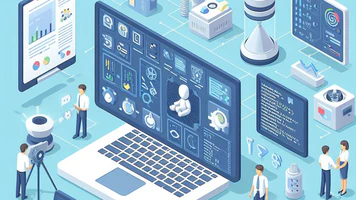
- By Justin Riddiough
- December 10, 2023
What is an Open Source AI Model?
An open-source AI model refers to a machine learning model whose source code is made freely available for anyone to view, use, modify, and distribute. This contrasts with proprietary models where the underlying code is kept private. The openness of source code empowers developers, researchers, and enthusiasts to contribute to, improve, and learn from the model.
Key Characteristics:
-
Access to Source Code:
- Open-source AI models provide unrestricted access to their source code, allowing users to inspect and understand the inner workings.
-
Freedom to Modify:
- Users have the freedom to modify the code to suit their specific needs. This flexibility is invaluable for customization, experimentation, and adaptation to diverse use cases.
Note: Open-source AI models are often accompanied by open datasets and open weights and parameters. These resources are essential for training and fine-tuning the model.
- Distribution Rights:
- The model can be freely shared and distributed among the community. This fosters collaboration and accelerates the pace of innovation as researchers can build upon existing work.
Why Open Source AI Models Matter:
1. Community Collaboration:
- Open source encourages a collaborative ecosystem where developers worldwide can contribute their expertise. This collective effort leads to faster problem-solving and continuous improvement.
2. Transparency and Trust:
- Transparency is a fundamental principle of open-source projects. Users can verify the model’s behavior, ensuring trust and accountability in applications where AI decisions impact individuals and society.
3. Learning and Education:
- Access to open-source AI models provides an invaluable resource for learning. Students, researchers, and aspiring developers can study real-world implementations, gaining insights into best practices and innovative approaches.
Examples of Open Source AI Models:
- Stable Diffusion
:
- Stable Diffusion is a generative AI model that creates high-resolution images from text descriptions. It is based on the diffusion model, a generative process that iteratively refines a low-resolution image to generate a high-resolution image.
- OpenAI Whisper
:
- OpenAI Whisper is a generative AI model that converts text to speech.


